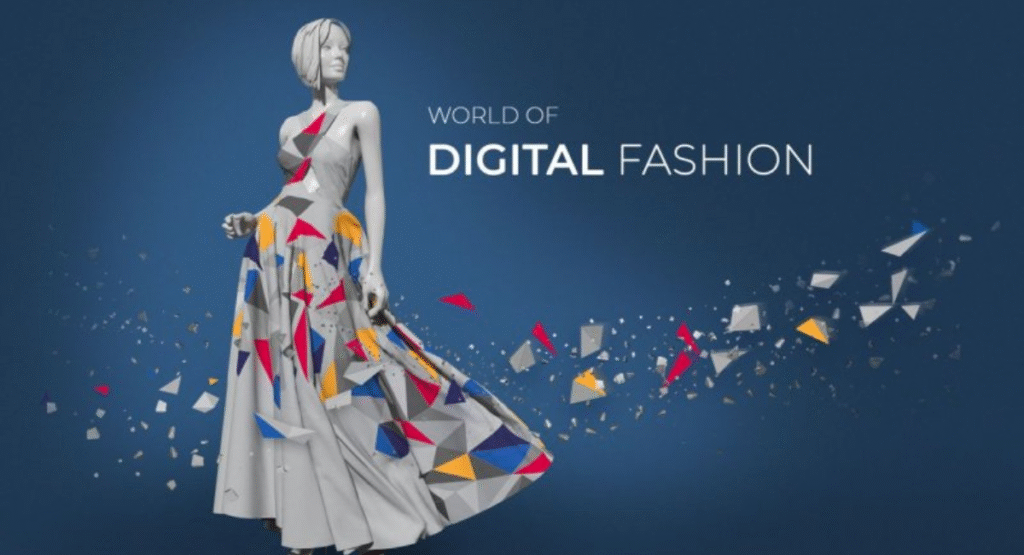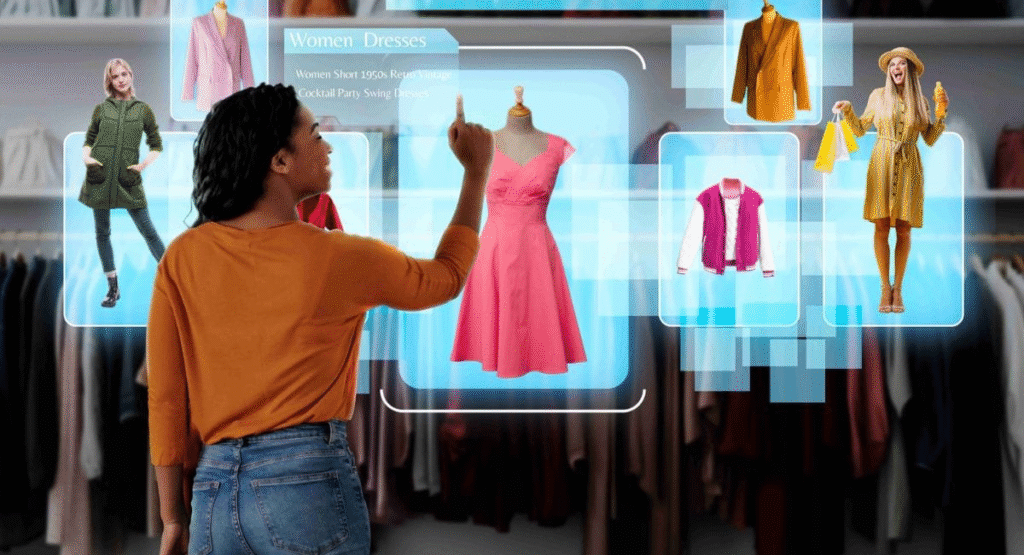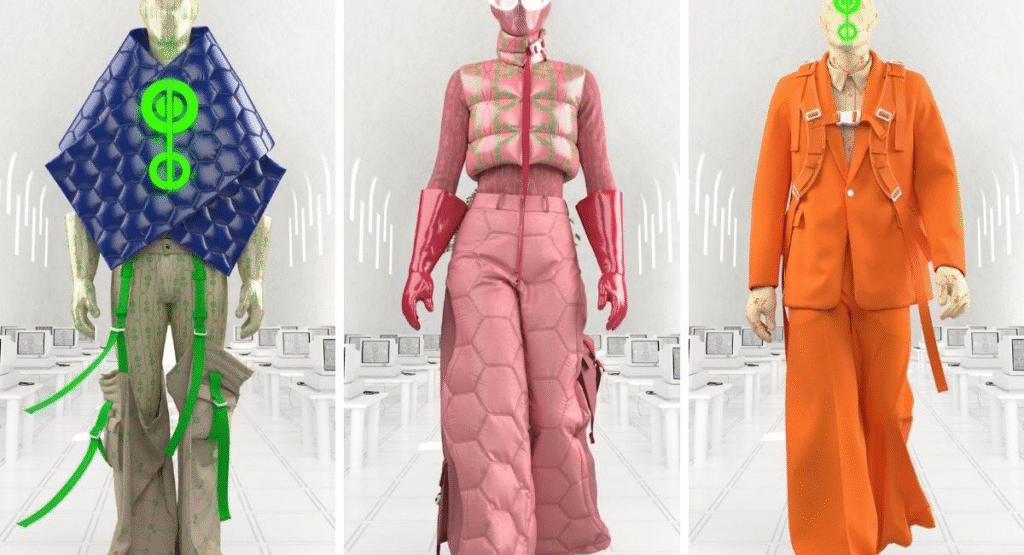Introduction
Digital Fashion and Virtual Clothing in Fashion has always been a mirror of culture, identity, and self expression. From handwoven garments of ancient times to industrialized fast fashion the industry constantly evolves to reflect human creativity and social change. In 2025 this evolution has taken a radical turn Digital Fashion and Virtual Clothing in fashion no longer exists only in physical form. Digital fashion and virtual clothing are reshaping style through technology offering limitless possibilities without fabric or threads.
This shift is more than novelty it’s a revolution. With the rise of metaverse platforms gaming ecosystems, and social media avatars people now invest in wardrobes that exist entirely online. Whether it’s a luxury NFT dress an augmented reality sneaker or an outfit designed for Instagram photos virtual clothing has become a billion-dollar industry. Digital Fashion and Virtual Clothing Digital Fashion and Virtual Clothing
Consumers today don’t just buy clothes to wear they buy them to be seen globally transcending borders and time zones.
The Evolution of Digital Fashion

The journey of digital fashion began with gaming. Players in titles like The Sims Fortnight and Roblox spent billions of dollars customizing their avatars. Digital Fashion and Virtual Clothing
What once seemed like play money turned into a thriving market. By the early 2020s brands realized that digital clothing wasn’t just entertainment it was an untapped goldmine. Digital Fashion and Virtual Clothing
The COVID-19 pandemic accelerated this adoption. With stores closed fashion weeks canceled and people stuck at home digital alternatives became essential.
What is Virtual Clothing?

Virtual clothing refers to garments designed entirely in 3D software and experienced through augmented or virtual reality. They aren’t physically wearable but can be displayed on avatars layered onto photos or used in gaming environments. Essentially they allow individuals to dress their digital identities.
Examples include Gucci’s virtual sneakers (worn via AR), Balenciaga’s couture outfits inside Fortnite and Louis Vuitton’s digital skins.
Benefits of Digital Fashion
The rise of digital fashion brings several powerful benefits:
1. Sustainability Traditional fashion contributes nearly 10% of global carbon emissions and generates millions of tons of textile waste annually. Virtual clothing bypasses manufacturing, shipping, and disposal, making it eco-friendly.
2. Creativity Without Limits Designers isn’t constrained by physics or textiles. They can experiment with futuristic looks that glow transform or defy gravity unlocking pure artistic freedom.
3. Accessibility and Affordability A luxury digital dress may cost $20–$200 compared to thousands for physical couture. This allows young creators influencers and everyday consumers to access premium fashion experiences.
Use Cases in 2025
Digital fashion is no longer a side experiment — it’s an industry pillar. In gaming, virtual outfits define personality. Players willingly spend on skins to express themselves in Fortnite Roblox or VRChat. In social media influencers wear digital couture for photoshoots gaining attention without paying thousands for real clothes.
E-commerce also integrates AR try-ons letting customers visualize clothes before purchase. This reduces returns and improves satisfaction. Schools and universities now teach digital fashion courses, preparing a new generation of 3D designers.
Digital Fashion vs Traditional Fashion

Here is a comparison between digital fashion and traditional fashion:
Impact on Designers and Consumers
For designers’ digital fashion is liberation. No longer tied to costly fabrics warehouses or factory schedules they can experiment freely. Independent creators can upload designs to platforms like DressX and instantly reach global buyers. The digital marketplace has flattened hierarchies giving smaller designers a level playing field.
For consumers fashion is no longer just about what they wear physically. Their digital identity matters equally. Avatars in metaverse events filters on Instagram and virtual wardrobes all add layers of individuality. A rare NFT dress can be as much of a status symbol as a Chanel handbag in the real world.
Role of AI and Blockchain
Two technologies power the reliability of digital fashion:
1. Artificial Intelligence (AI) AI algorithms generate clothing concepts in seconds predict upcoming style trends and personalize recommendations. Imagine an AI stylist suggesting digital outfits based on your mood schedule or online presence.
2. Blockchain Blockchain technology ensures authenticity and ownership. Each digital garment can be minted as an NFT making it tamper proof and uniquely owned. This eliminates counterfeiting and creates a resale market for digital assets.
According to Forbes, blockchain backed fashion items are one of the fastest-growing tech driven luxury categories proving that trust and transparency are essential in digital ownership.
Environmental Impact vs Fast Fashion
Fast fashion is one of the most polluting industries on Earth responsible for water contamination landfills overflowing with textile waste and exploitative labor practices. By contrast digital fashion eliminates these problems. No cotton fields no chemical dyes no shipping containers no warehouses.
According to global sustainability reports if even 10% of global clothing consumption shifts to digital alternatives the fashion industry could cut millions of tons of CO₂ emissions annually. Digital clothing also saves billions of liters of water traditionally wasted in textile dyeing and fabric production. For climate conscious consumers this is a powerful reason to embrace virtual wardrobes.
Regional Adoption in 2025
Digital fashion adoption looks different worldwide:
United States → Major retailers integrate AR fitting rooms and digital fashion previews into e-commerce platforms.
Europe → Luxury fashion houses, from Paris to Milan, lead the charge in haute couture digital collections.
Asia → China, Japan, and South Korea dominate gaming-driven digital fashion. Avatars in Roblox Genshin Impact and VRChat thrive on digital outfits.
Middle East → The UAE and Saudi Arabia invest heavily in metaverse fashion weeks, merging tradition with futuristic showcases.
This diversity highlights digital fashion’s global adaptability it’s not just a Western trend but a worldwide cultural movement.
Future Trends Beyond 2025
The next five years promise exciting growth:
1. AI-Generated Fashion – Algorithms will create hyper-personalized clothing lines in seconds.
2. VR Fashion Shows – Entire runways will exist inside metaverse platforms, with global audiences joining live.
3. Digital-Only Brands – Companies like DressX and The Fabricant will expand as pioneers of digital-first fashion.
4. Biometric Integration – Outfits that respond to mood, heart rate, or even social settings could become mainstream.
Digital fashion is evolving from novelty into daily lifestyle integration, blending seamlessly with AR glasses VR environments, and wearable devices.
Case Studies and Examples
Gucci made headlines with its $12 AR sneakers proving consumers will pay for purely digital products.
Balenciaga collaborated with Fortnite dressing millions of avatars in couture.
Nike purchased RTFKT Studios a leader in NFT sneakers securing its dominance in the metaverse.
DressX and The Fabricant two digital only platforms have already sold thousands of digital outfits showing profitability in markets with no physical supply chains.
These cases prove that digital fashion is not the future it is already here.
Predictions for 2030
By 2030 experts predict digital fashion will make up 15 20% of global fashion revenue. People will maintain two wardrobes: one physical and one digital. AR glasses will replace fitting rooms and VR events will normalize wearing digital couture.
Some analysts even suggest that future employment or dating profiles will include digital wardrobes as a measure of status just like physical clothes today. The merging of identity technology and fashion will only deepen.
FAQs
What is digital fashion in simple terms?
Digital fashion is clothing that exists only online designed in 3D and worn in AR/VR or on avatars.
Can virtual clothes replace real ones?
No but they complement physical wardrobes. People will wear physical clothes daily while enhancing digital identities online.
Are NFTs necessary for digital fashion?
Not always, but NFTs secure ownership and prevent counterfeits. They make virtual clothes collectible and resalable.
Is digital fashion affordable?
Yes. While some luxury items cost thousands most digital pieces range between $10–$200, cheaper than physical couture.
Which industries use digital fashion?
Gaming, e-commerce social media education and entertainment.
Conclusion
Digital fashion and virtual clothing in 2025 are not passing fads but a paradigm shift in how style is consumed created and valued. By combining creativity sustainability and technology digital fashion offers limitless opportunities while addressing the environmental failures of fast fashion.
As AI blockchain and AR/VR expand digital clothing will become as important as physical fashion. In the near future, owning a wardrobe may not mean just hanging clothes in a closet it will also mean storing them in the cloud.
The future of fashion is clear: pixels are the new fabric.
| Feature | Digital Fashion | Traditional Fashion |
| Cost | Lower,digital-only purchases | higher,material&labor costs |
| Waste | Zero fabric waste | High production waste |
| Reach | Global instant access | Limited to physical distribution |
| Storage | Cloud/NFT | Closets& warehouss |
| Speed to Market | Instant digital release | Weeks or months for production |
Pingback: USA Celebrity Fashion Trends for 2025